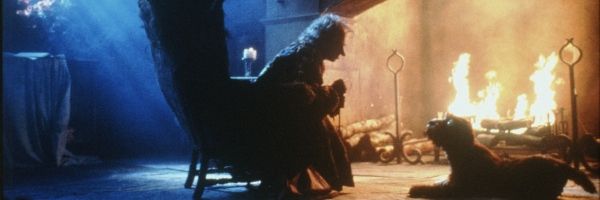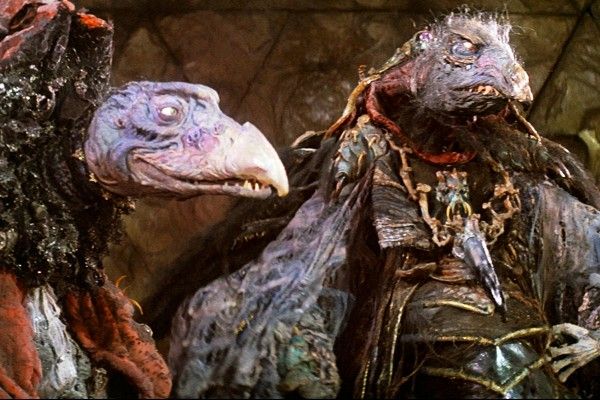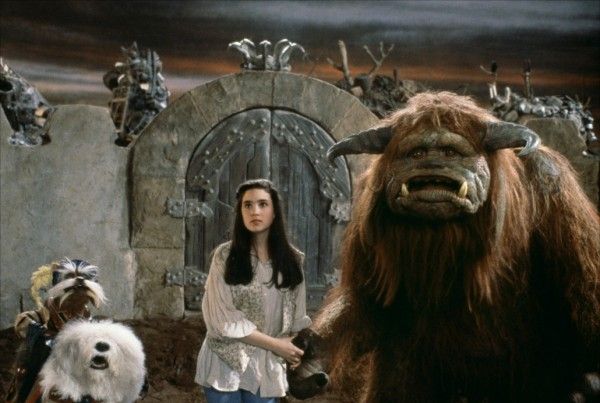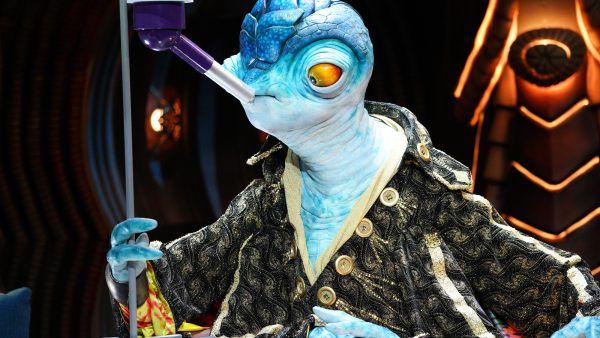Back in 1977, Jim Henson started thinking about a project that was beyond what he was doing with his beloved Muppets. Inspired by the work of English illustrator Brian Froud, he began to conceptualize a vast and fantastical world, populated with characters much darker and more intricate than anything he had attempted before. This project would eventually become The Dark Crystal, and in order to make his dream a reality, Henson would have to assemble an all-star group of artists, technicians, designers and puppeteers, and venture into the more technologically complex waters of animatronics. Just as The Dark Crystal would invite audiences into an entirely new world, Henson himself would be venturing out into previously unexplored territory. This is how the Creature Shop began.
“I've been with the Creature Shop since it was born, in London,” Brian Henson told me. “My dad created the Creature Shop because he first pulled the team together to make Dark Crystal in London. And they worked for years. He basically bought a property in Hampstead across the street from the house where he lived while making The Muppet Show. And he bought the building across the street. It was an old post office. And he just started filling it with artists and had them start working on Dark Crystal. And Dark Crystal took years of preparation before he actually made the movie, because that was all a new thing for him. The idea of characters that, you're meant to believe that they're alive, much more so than the Muppets, which is really an abstract ... they're clearly inanimate.”
The work that the team (which included Froud) created for The Dark Crystal was truly revolutionary. Duncan Kenworthy, who would go on to produce Four Weddings and a Funeral, was Jim’s right hand man and helped establish what would become the Creature Shop. In No Strings Attached: The Inside Story of Jim Henson’s Creature Shop, Kenworthy remembers that, “We’d heard Steven Spielberg was developing a movie called ET. At one point Gary Kurtz, who was producing The Dark Crystal, told me that Steven wanted to look around what was to become the Creature Shop workshop. I was a bit panicked because we were all concerned about seeing our techniques. Jim was much less worried. He thought that everyone should share these new developments.” Kenworthy described the production of The Dark Crystal as “a pioneering venture.”
And the technical accomplishment, along with Henson’s desire to create something more complex and nuanced than The Muppets, was not lost on critics. “In the way that great comic actors are supposed to long to play Hamlet, Jim Henson, who created the Muppets, and Frank Oz, his longtime associate, have apparently dreamed of creating mechanical marvels more significant and timeless than the irrepressible Miss Piggy and her pals,” Vincent Canby’s review in the New York Times began. Christopher Finch, in Jim Henson: The Works, said, “So radical were the advances that the word puppetry seemed insufficient to describe how many characters were brought into being.”
But after work on The Dark Crystal had been completed, Jim “disbanded them” (according to Brian). “And they all kind of went home,” Brian said. “And [George] Lucas hired a whole bunch of them to work on The Empire Strikes Back. And then my dad hired him all back again for Labyrinth.” It was around this time that Jim thought that maybe there should be a permanent group of artists laboring to create these more detailed creatures. “He realized he really didn't like letting all those great artists go after the movies wrapped. So he wanted the Creature Shop to continue all the time, year round. But he also didn't want to have to be responsible that much production himself. And up until then, his shops were always exclusive to himself. When he named it the Creature Shop, he also then allowed the Creature Shop to realize characters and character effects for other producers other than himself. And the reason he did that was so that he could hold that team of artists working year-round. It allowed them to progress and have the level and quality of the characters get better and better, the creatures get better and better.”
The Creature Shop itself moved to a nondescript building in London’s Camden Town, in a corner of North London. They produced Alice in Wonderland characters for Dennis Potter’s Dreamchild, based on the original illustrations for the book by Sir John Tenniel (they were adapted by Potter and genius Creature Shop sculptor Lyle Conway) and worked on Nicolas Roeg’s adaptation of Roald Dahl’s The Witches and the comic book adaptation Teenage Mutant Ninja Turtles. The Creature Shop also provided next-generation characters for Henson’s own projects like The Storyteller, The Jim Henson Hour and Dinosaurs (which would ultimately air following Jim’s tragic death). And all the while the characters were becoming more sophisticated and more emotionally complex. Additional Creature Shop outposts opened in New York and Burbank.
And even without Jim, the Creature Shop continued to be industry leaders in their field, creating the dinosaur characters for Steven Spielberg’s live action The Flintstones movie and winning an Oscar for helping create the barnyard animals in Babe. In the years since they have worked on everything from Spike Jonze’s Where the Wild Things Are to Kanye West’s unforgettable Glow in the Dark tour to Brian Henson’s own wildly imaginative Star Trek-y sci-fi series Farscape. But the most impressive Creature Shop creation has just debuted in the form of giant, towering alien Ned in the new Disney+ original series Earth to Ned.
Ned is a space alien sent to Earth to destroy it but who winds up falling in love with Earth pop culture. Instead of conquering, he decides to host a talk show. Ned is a huge character, with an enormously expressive face and four arms. He’s controlled by six puppeteers (including the insanely talented Paul Rugg, who works Ned’s mouth and provides his voice) and moves with graceful, almost unprecedented fluidity. (He’s joined by his sidekick Cornelius, who is a more traditional hand puppet with animatronic eyes.) Just seeing Ned and Cornelius on screen is enough to make you crack a smile (the show itself is a total riot).
“I do believe he's the best animatronic character we've ever made,” Brian said of Ned. “He’s like Pilot, from Farscape, only even better and even more extraordinary. And he's a motorized animatronic, where the effect is fully realized in camera. There’s no post-production work done to him. And it's really, it's one skill that the Creature Shop is sort of unsurpassed by anybody else, is their animatronic creatures. I just think they're really, really good at it.” Henson stresses that “it’s not a post-production process.” And part of the way that the Ned character is really sold is through the use of real-time puppetry and animatronics. “I wanted to capture it in real time. If it's a talk show, if you're putting people, personalities, into the environment, boy it's so much better when they're really there. And all the creatures are really there. And they are really having that experience,” Henson explained. “All of those interviews would be less authentic and less entertaining if Ned and Cornelius were partially post-production effects.”
And while the London Creature Shop has closed its doors, the California and New York locations are still busy. They’ve consolidated their operation a little bit too. “It used to be that the simpler hand puppets were outside the Creature Shop and were in our New York workshop,” Brian explained. But now they are all under one roof. “Now we have two Creature Shops, one in Burbank and one in New York, and they both do everything now. They build puppet characters, they build creatures, animatronic characters. And we also do digital characters and digital animation, out of Hollywood. Basically what they do is they realize characters. That's what they do. It's not a physical effects shop, it's not a visual effects shop. It's all visual effects and physical effects when they’re character effects.” That means everything from Henson’s own computer-animated PBS series Splash and Bubbles, to creating the stand-in creatures for Jon Favreau’s The Jungle Book to creating (and I am not kidding about this) Deadmau5’s helmet and a walk-around Smilodon for the Los Angeles Museum of Natural History. Things also came full circle, when they launched the ambitious The Dark Crystal: Age of Resistance series on Netflix. When Jim Henson corralled those artists and technicians for what would eventually become The Dark Crystal, he set a precedent of limitless imagination that the Creature Shop is still following through on. And by the way a luxury apartment building now rests where the old Creature Shop once stood in North London. Its name? The Henson.




